Emily Lakdawalla • Oct 14, 2014
Phobos over Mars
Today the Mars Orbiter Mission released a nice four-image animation of teeny dark Phobos crossing Mars' huge orange disk. I made this animated GIF by taking screen-captures of the four different frames of a video that they released to Facebook -- not the cleanest path for acquiring spacecraft data. But this is the best I've been able to find on the Internet. Given the range at which the image sequence was taken (66,275 kilometers, very similar to this global view) the original four frames should've been able to contain all of Mars within their 2048-pixel-square frame, so we're seeing a subsampled view of the original data. Still, it's neat to see Phobos in motion.
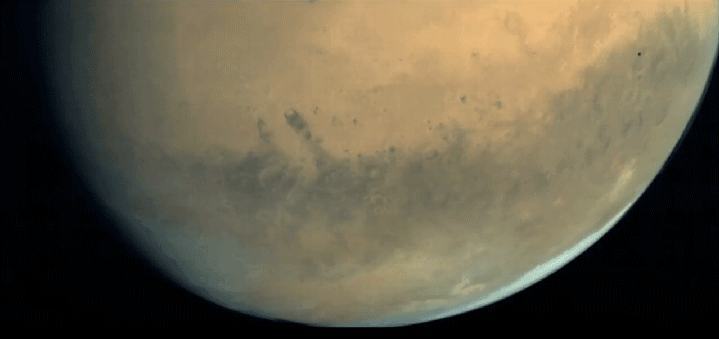
Mars Orbiter Mission joins a long line of Mars missions that have produced images of Mars and Phobos together. When Mars and its moon are in the same frame, you learn very quickly how tiny Phobos is, and also how dark it is. Like most of the solar system's small bodies, it has a very low albedo, reflecting only about 7% of the light that strikes it. Actually Mars is not bright either, but with a global albedo of 15% it's more than twice as reflective as Phobos, and when you adjust an image to show Mars bright, Phobos remains pretty dark.
The image in my library that's most similar to the Mars Orbiter Mission one is this, from Rosetta:
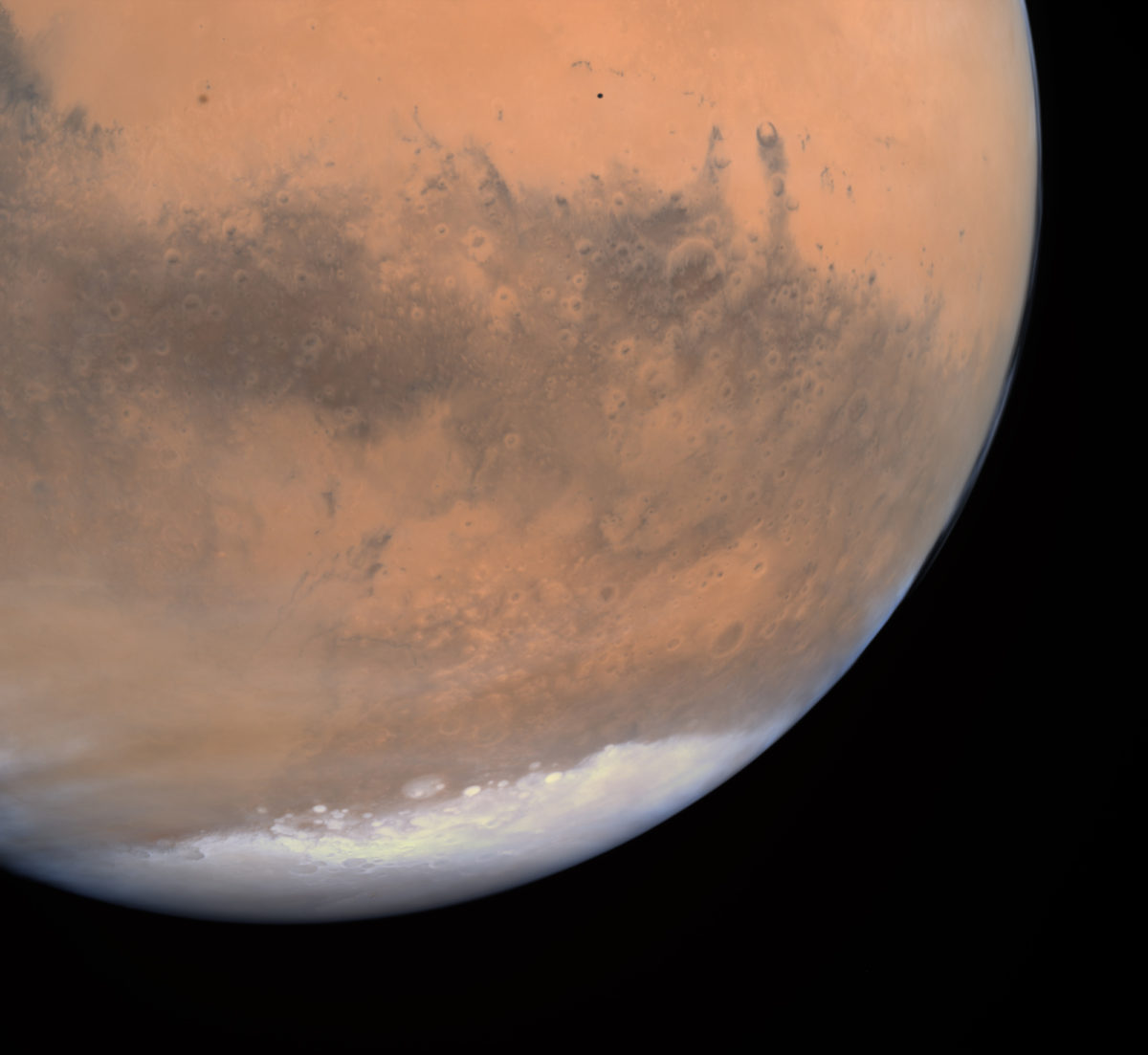
That one actually contains not only Phobos but also Phobos' shadow:

...which makes me think that the Mars Orbiter Mission animation should also contain Phobos' shadow, but at the resolution and quality that I was able to grab it from Facebook, I don't see it.
Mars Express has gotten some great grayscale pictures of Phobos over Mars. Unlike Mars Reconnaissance Orbiter and Mars Odyssey, Mars Express has a distant, elliptical orbit that allows it to get pretty close to Phobos for a dozen orbits every five months, making for gorgeous photographs.
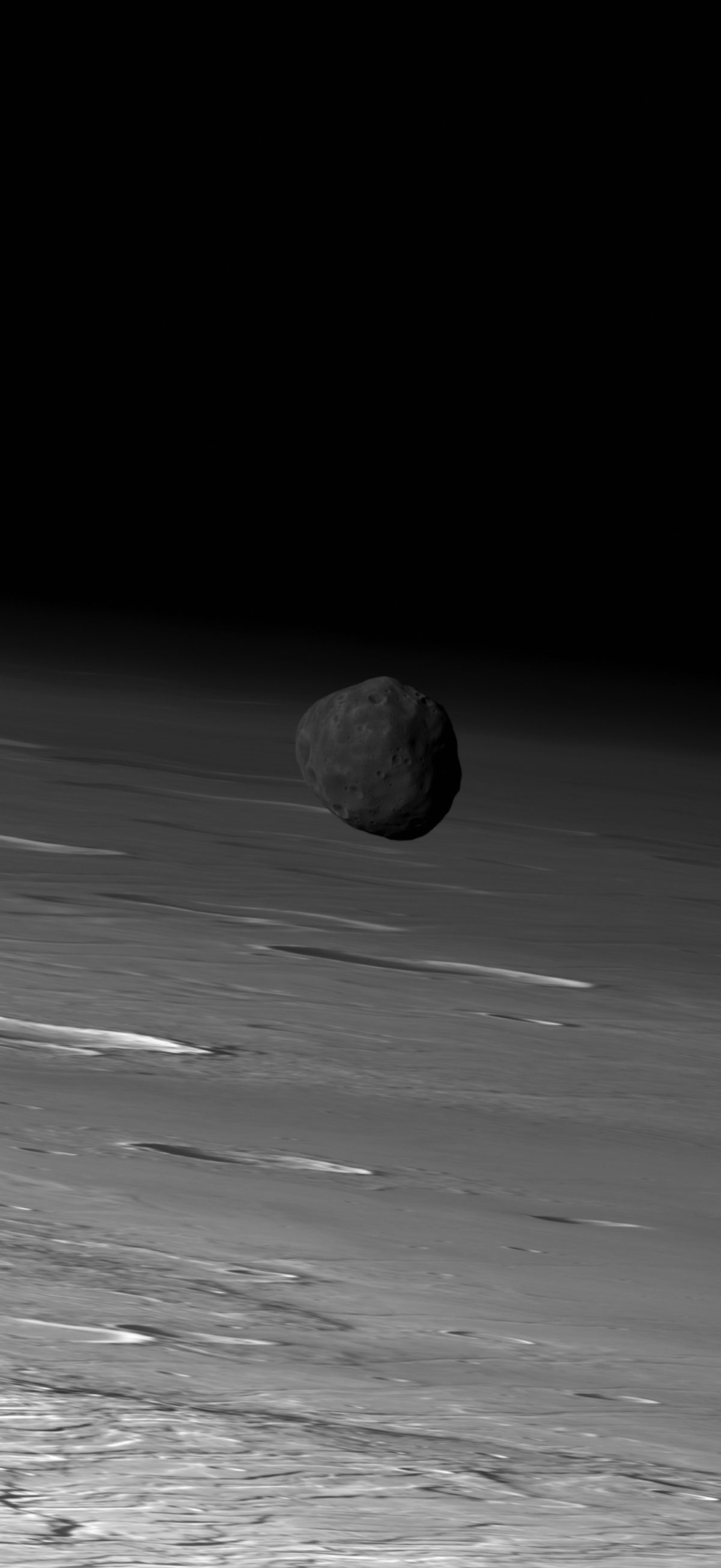
But the loveliest color images of Phobos over Mars that I've seen come from a somewhat surprising source: they're Russian. We usually think of the Russian Mars missions as failures. But Phobos 2 got some fantastic images of Phobos before it failed. Here are a few, processed by Ted Stryk.
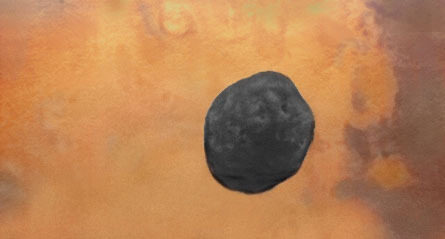

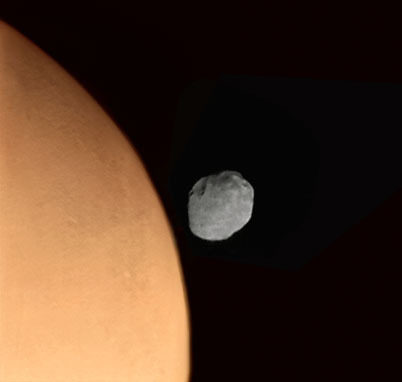
Support our core enterprises
Your support powers our mission to explore worlds, find life, and defend Earth. You make all the difference when you make a gift. Give today!
Donate

 Explore Worlds
Explore Worlds Find Life
Find Life Defend Earth
Defend Earth

